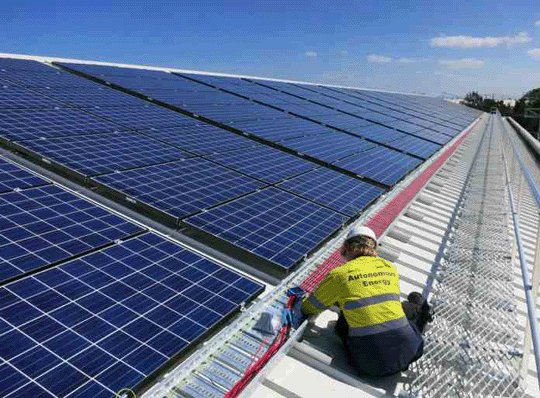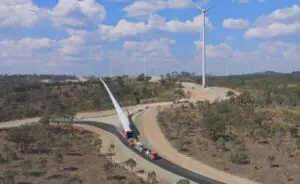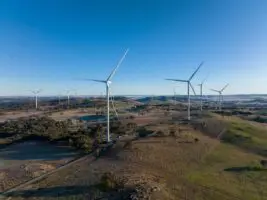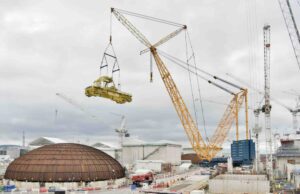The Australian Energy Market Operator has highlighted the big changes ahead for the Australian electricity grid brought about by rooftop solar PV and battery storage, in its first major assessment of the household market and its impacts on the grid.
For the first time, AEMO has made household energy use and solar production a key component of its annual estimate of future demand, and its conclusion is that the expected massive increase in solar and storage is expected to have a big impact on the shape of the market.

Firstly, AEMO says, rooftop solar PV will effectively remove the traditional afternoon demand peak in summer and push the peaks into the evening, after the sun sets. Winter peaks – due to heating – will likely overtake summer peaks, while the lowest point of use will shift from late into the night, to the middle of the day.
In some states, such as South Australia, that is already happening because of their large penetration of rooftop solar. Indeed, in Queensland and South Australia, networks are beginning to shift “off-peak” or “controlled load” electric hot water from the middle of the night to the middle of the day when it can be powered by solar PV, employing what the networks call the “solar sponge”.
AEMO estimates that the amount of electricity generated by rooftop solar PV will rise more than four-fold in the next two decades to more than 25,000GWh, and will account for around 14 per cent of total demand. (Some forecasters expect a significantly higher amount).
AEMO also expects energy efficiency to reduce grid demand by a further 27,000GWh. This means that even though households will be using more electronic devices than ever (more light bulbs, bigger TVs, and more air-con and freezers and the like) total demand from households will be 16 per cent lower in 2035 than it is now.
It also means that despite an expected 30 per cent jump in the population, total demand from the main grid will grow only marginally, from 183,258 gigawatt hours (GWh) in 2015–16 to 184,467GWh in 2035–36.
Indeed, AEMO’s demand forecasts have been cut by 3 per cent in just the past year, and is 8 per cent down on grid consumption back in 2009/10, despite a surge in demand to burn coal and gas to service the power-hungry LNG export industry.
All this is changing the market dramatically, and should also change the way that regulatory and policy makers think about the market. All of their recent decisions, giving a green light to unbridled network spending, for example, have been based around the assumption that demand will always rise. But this is no longer true.
“Energy efficiency and rooftop PV is changing patterns of demand,” the AEMO report says. Maximum demand will be clipped by solar and pushed into the evening, minimum demand will shift from the night-time to the day-time, and generators will require increased flexibility to respond.
Some, though, will still consider the findings to be conservative. AEMO predicts that rooftop solar will increase from 4.3GW now to 19GW in 2035, taking into account reduced output from ageing panels, a point it seemed keen to underline.
Other forecasters such as Bloomberg New Energy Finance predict that rooftop solar PV in Australia will reach 37GW by 2040, and its forecasts for battery storage are also way ahead of the AEMO forecast.
Despite predicting that battery storage will become “economic to the mass market” in the 2020s, it still expects only 6.6GWh of battery storage by 2035, with less than one-fifth of rooftop solar capacity integrating battery storage.
Even based on the fact that its figures do not include the retrofit market (i.e. the homes that already have rooftop solar) it falls well short of BNEF’s predictions of 33GWh of battery storage.
Still, even on that basis, battery storage is predicted to reduce peak demand by 5 per cent in Victoria and South Australia and by 2 per cent in NSW and Queensland.

Interestingly, although household consumption is expected to fall by 16 per cent, despite a 30 per cent increase in population, the AEMO forecasts tend to differ dramatically from those of the CSIRO’s Future grid report, and by coal generators such as Engie, who forecast up to half of all generation to be locally sourced by 2040-50.
That spending is now coming home to roost. It is one of the key factors pushing consumers to solar and storage. Total demand from the grid is not expected to grow, peak demand will be contained by solar PV and battery storage, and minimum demand in some states, such as South Australia, will fall to zero or even in negative territory.

AEMO chief executive Matt Zema says maximum demand is forecast to remain flat across the outlook period, despite increased use and capacity of heating and air conditioning as growth is offset by energy efficiency and rooftop PV.
“In particular rooftop PV is changing power flows so the maximum electricity demand of the system is projected to occur later in the day when the sunshine is less intense,” Zema said. Indeed, a separate report highlights how rooftop solar is slashing peak demand, and delaying it, in West Australia.
“However minimum demand for electricity is forecast to remain flat for five years and then reduce rapidly with forecast increases in rooftop PV, starting to shift minimum demand from overnight to near midday when the sun is strongest and overhead. This is already the case for South Australia.”
The table above highlights the anticipated falls in minimum demand in all states, particularly in comparison with maximum demand. This reinforces the view that what is now described as “base load” power, but which in effect means large, centralised and inflexible generators, will have a much reduced role in the future grid.
And remember, that table is based on relatively conservative forecasts from the market operator. The AEMO scenarios suggest that total demand from the grid could fall to 150,000GWh by 2035. As recently as 2011, the market operator had been predicting grid demand of more than 270,000GWh by 2022! How times have changed.
On solar PV, AEMO gives this breakdown by state. It says solar demand will be driven by declining costs, higher grid prices and changing consumer behaviour.
It says that by 2035–36, rooftop solar PV will contribute 24 per cent of the state’s total demand, followed by Queensland with 17 per cent, Victoria 14 per cent, NSW 11 per cent and Tasmania 6 per cent.
AEMO also notes that electric appliance usage will increase, although appliance efficiency will still reduce overall demand. Also, switching from gas appliances to electric ones could reduce electricity demand by 10 per cent.

There was one paragraph of note that could signal a red flag for the solar PV industry.
“Particularly from 2025, periods of low demand may introduce different incentive effects which are not yet modelled in the forecasts. These incentive effects could slow rooftop PV uptake relative to the assumed forecasts, which would alter projections of minimum demand.”
RenewEconomy asked AEMO to explain what it meant by “different incentive effects”, and whether they relate to proposals from network operators such as SA Power Networks which want “demand charges” that they admit will slow down the uptake of solar. We did not get a reply before publication, but will update if we do.










